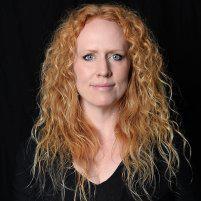 What are tear ducts?
What are tear ducts?
Glands located in your eyelids constantly release moisture that creates a protective tear film over the surface of your eyes. The tear ducts are part of a drainage system that siphons extra tears away from your eyes when you blink.
Tears exit your eye through the puncta, which are the small openings along your upper and lower eyelids near your nose. The tears travel to your tear ducts and eventually drain to your throat.
Sometimes, tear ducts can get blocked due to infection, inflammation, trauma, or another cause. When tear ducts are blocked, tears can’t drain and you can experience irritated, watery eyes, and painful swelling.
What types of tear duct surgery are available?
Recurrent tear duct stenosis (tear duct blockage) can be painful, and it’s often linked to continual eye infections. When you’re suffering from recurring tear duct blockage, Dr. Charlson may recommend tearing surgery to improve eye health.
Tear duct probing is a procedure designed to remove blockages. Using a small probe, Dr. Charlson clears away blockages. She may place stents within your tear duct system. Stents are very small tubes placed during the probing procedure to facilitate drainage.
Punctoplasty addresses punctal stenosis, which is the narrowing of one or more puncta in your eyes. This procedure widens the puncta to improve drainage into your tear ducts.
Endoscopic dacryocystorhinostomy (DCR) surgery is another treatment option for nasolacrimal duct obstruction. This surgery involves creating a new passageway for your tears between your eye and your nose. Dr. Charlson completes endoscopic DCR surgery from inside your nose, so there’s no visible incision.
What can I expect if I get tear duct surgery?
Dr. Charlson generally diagnoses tear duct blockage after performing a physical exam and reviewing your symptoms and medical history. Chronic duct blockage could mean you’re a good candidate for tear duct surgery.
If you have a duct probing procedure, you’re put under general anesthesia. Dr. Charlson guides a sterilized wire through the puncta to clear any blockages. She may place stents to improve drainage at the same time, and the procedure may take as little as 10 minutes per eye.
Endoscopic DCR for nasolacrimal duct obstruction is more complex, and the procedure can take between 45-60 minutes. Dr. Charlson makes a small hole inside your nose and uses an endoscope to create a new drainage pathway by connecting your tear duct to your nose.
Tear duct surgery could relieve symptoms of painful, irritated, or watery eyes. Learn more about duct blockage treatment options by calling the office or booking a consultation online today.


 What are tear ducts?
What are tear ducts?